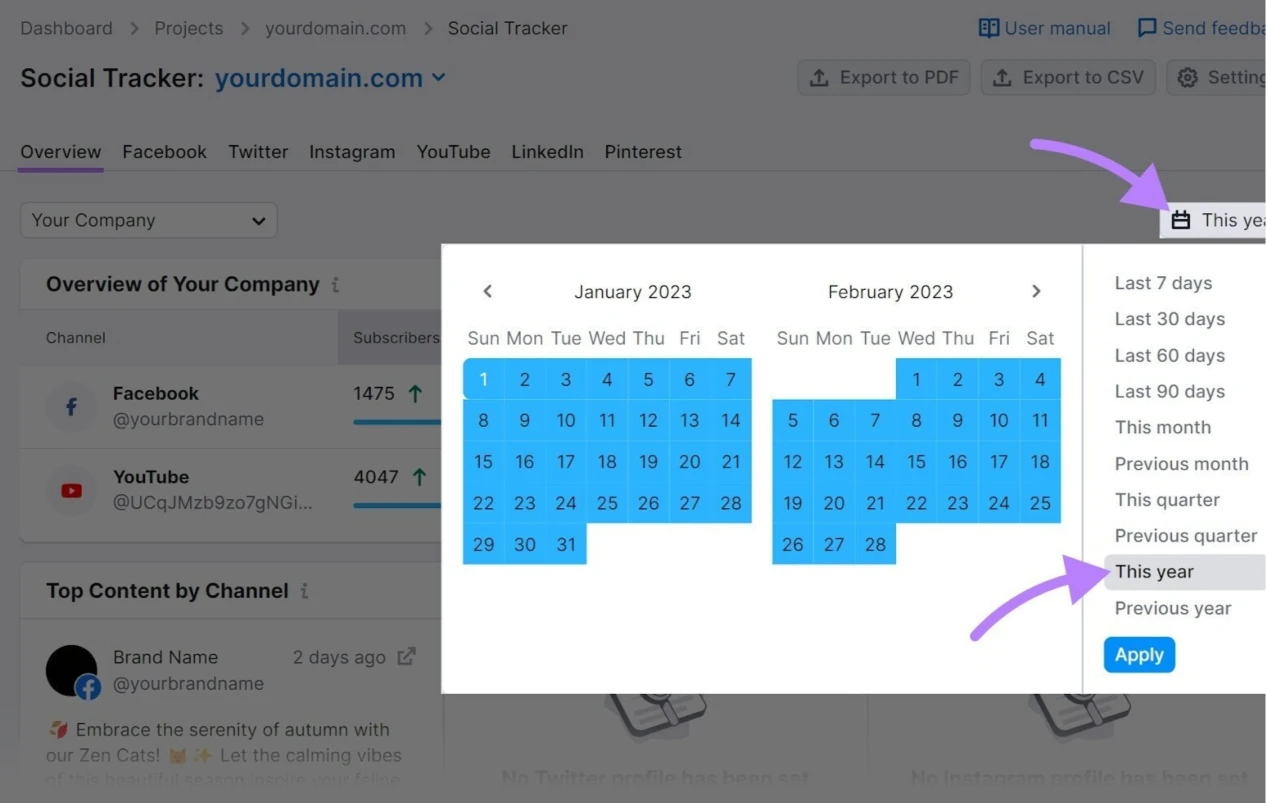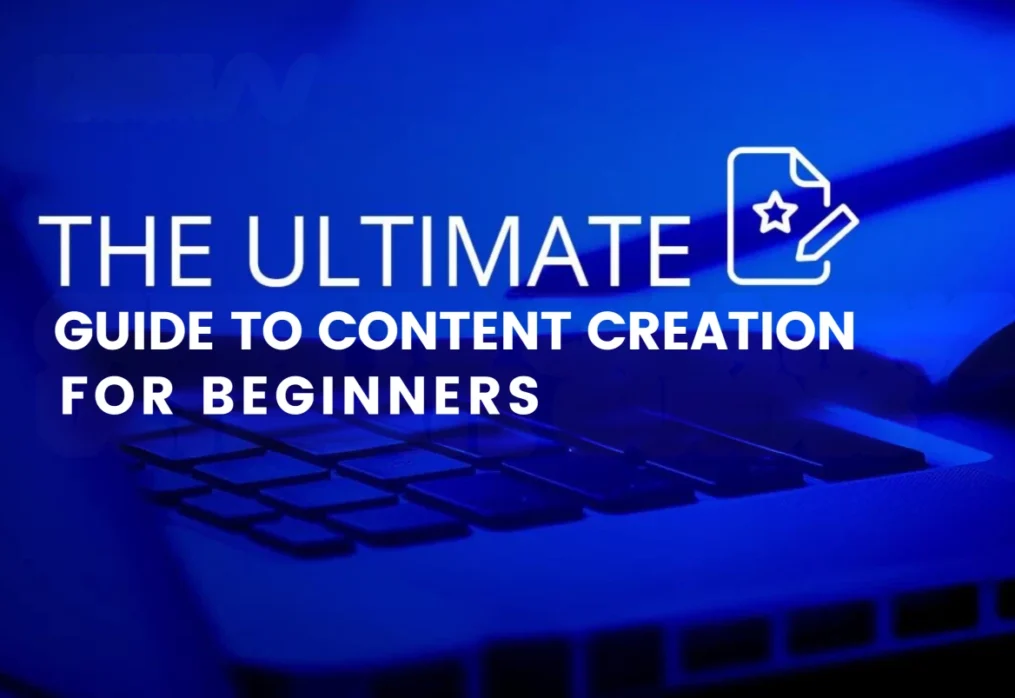The Ultimate Guide to Content Creation for Beginners: How to Start Creating Compelling Content
Welcome to the ultimate guide to content creation for beginners! If you have been wanting to dive into the world of creating compelling content but don’t know where to start, this is the perfect place for you. In this guide, we will walk you through the step-by-step process of content creation, providing you with valuable tips and techniques to help you craft content that captivates your audience.
Whether you are a blogger, entrepreneur, or small business owner, the ability to create engaging content is essential in today’s digital landscape. With our easy-to-follow guide, you will learn how to brainstorm ideas, conduct keyword research, structure your content effectively, and ultimately create content that drives traffic and conversions.
But this guide goes beyond just the basics. We’ll also delve into the psychology of content creation and how to create content that resonates with your target audience on a deeper level. You’ll discover the power of storytelling, the art of persuasive writing, and the secrets to crafting headlines that grab attention.
So, if you’re ready to take your content creation skills to the next level, let’s get started on this exciting journey together!
The Importance of Content Creation for Businesses

Content creation has become a crucial aspect of any modern business’s marketing strategy. In today’s digital age, where consumers have access to an abundance of information at their fingertips, it is essential for businesses to create high-quality content that stands out from the crowd.
Creating valuable and engaging content not only helps businesses establish themselves as industry experts but also allows them to connect with their target audience on a deeper level. By providing informative and entertaining content, businesses can build trust and credibility, which ultimately leads to increased brand loyalty and customer retention.
Moreover, content creation plays a vital role in driving organic traffic to a business’s website. By creating content that is optimized for search engines, businesses can improve their online visibility and attract potential customers who are actively searching for information relevant to their products or services.
9 Key Steps to Create Compelling Content
1. Understanding Your Target Audience and Their Content Preferences

Before diving into content creation, it is crucial to understand your target audience and their content preferences. By gaining insights into your audience’s demographics, interests, and pain points, you can create content that resonates with them and addresses their specific needs.
Start by conducting market research and creating buyer personas to gain a deeper understanding of your target audience. Identify their age, gender, location, and other relevant demographics. Additionally, explore their online behavior, such as the platforms they use and the type of content they engage with the most.
Once you have a clear understanding of your target audience, you can tailor your content to their preferences. For instance, if your audience consists of busy professionals, you might want to create concise and informative blog posts that can be quickly consumed. On the other hand, if your audience is more visual-oriented, incorporating infographics or videos into your content might be more effective.
Remember, the key to successful content creation lies in delivering value to your audience. By understanding their needs and preferences, you can create content that not only captures their attention but also provides them with the information they are seeking.
2. Finding Your Unique Voice and Brand Identity

In a sea of content creators, finding your unique voice and brand identity is essential to stand out from the crowd. Your unique voice sets you apart and helps you build a recognizable brand that resonates with your audience.
To find your unique voice, start by defining your brand’s core values and mission. What makes your brand different from your competitors? What do you want your audience to think and feel when they interact with your content? Answering these questions will help you establish a consistent tone and style for your content.
Additionally, consider your target audience and the industry you are operating in. Is your audience looking for a casual and conversational tone, or do they expect a more formal and professional approach? Aligning your voice with your audience’s expectations will help you create content that speaks directly to them.
Lastly, don’t be afraid to inject your personality into your content. Share your personal experiences, opinions, and insights to create a genuine connection with your audience. Authenticity is a powerful tool in content creation, and it helps build trust and loyalty among your audience.
3. Conducting Keyword Research for Content Ideas

Keyword research is a vital step in content creation as it helps you identify the topics and keywords that your target audience is searching for. By incorporating relevant keywords into your content, you can increase your chances of ranking higher in search engine results and attracting organic traffic.
Start by brainstorming a list of topics that are relevant to your industry and align with your audience’s interests. Once you have a list, use keyword research tools such as Google Keyword Planner, SEMrush, or Ahrefs to identify the search volume and competitiveness of these keywords.
Look for keywords with a high search volume and low competition. These keywords are more likely to bring in targeted traffic to your website. Additionally, consider long-tail keywords, which are more specific and have a higher chance of conversion.
Remember, the goal of keyword research is not just to find popular keywords but also to understand the intent behind these keywords. By understanding what your audience is searching for, you can create content that directly addresses their needs and provides them with valuable information.
By mastering prompt engineering for marketing, you can create more targeted and effective content, leveraging AI tools to generate ideas that resonate with your audience.
4. Creating an Effective Content Calendar

An effective content calendar is a crucial tool in content creation as it helps you stay organized and consistent with your content production. By planning ahead and scheduling your content, you can ensure a steady flow of quality content that engages your audience.
Start by outlining your content goals and objectives. What do you want to achieve through your content? Do you want to educate, entertain, or inspire your audience? Once you have a clear vision, break down your goals into smaller, actionable tasks.
Next, create a content calendar that outlines the topics, keywords, and publishing dates for your content. Be realistic with your schedule and consider your available resources and bandwidth. It is better to create high-quality content less frequently than to produce mediocre content on a daily basis.
Additionally, consider the seasonality and trends in your industry. Are there any upcoming events or holidays that you can leverage in your content? By aligning your content with timely topics, you can increase its relevance and shareability.
Lastly, don’t forget to repurpose and republish your existing content. Update and optimize your older posts to keep them relevant and drive additional traffic to your website.
5. Writing Compelling and Engaging Blog Posts

When it comes to content creation, writing compelling and engaging blog posts is a skill that can set you apart from your competitors. By following a few key principles, you can create blog posts that captivate your audience and keep them coming back for more.
Start by crafting attention-grabbing headlines that pique your audience’s curiosity. Use power words, numbers, and questions to make your headlines irresistible. Remember, your headline is the first impression your audience has of your content, so make it count.
Next, focus on creating an introduction that hooks your readers from the start. Use storytelling techniques, ask thought-provoking questions, or present a surprising fact to captivate your audience’s attention. The introduction should set the stage for what’s to come and make your readers eager to continue reading.
In the body of your blog post, use subheadings to break up your content and make it easier to read. Use short paragraphs, bullet points, and images to enhance readability. Additionally, incorporate relevant statistics, examples, and case studies to back up your claims and provide valuable insights to your audience.
Finally, end your blog post with a strong conclusion that summarizes your key points and provides a clear call-to-action. Encourage your readers to leave comments, share your content, or subscribe to your newsletter. By engaging with your audience at the end of your blog post, you can foster a sense of community and encourage further interaction.
One of the most impactful ways to deliver value is by creating a YouTube video, which can visually demonstrate your points and provide hands-on guidance to your audience.
6. Incorporating Visuals and Multimedia into Your Content

In today’s visually driven world, incorporating visuals and multimedia into your content is essential to keep your audience engaged. Visual content not only makes your content more visually appealing but also helps convey complex ideas in a more accessible and memorable way.
Start by choosing high-quality images that complement your content and enhance its message. Use images that are relevant to your topic and align with your brand’s aesthetic. Additionally, consider using infographics, charts, or graphs to present data or statistics in a visually appealing format.
Moreover, consider incorporating videos into your content. Videos have become increasingly popular in recent years, and they allow you to convey information in a more dynamic and engaging way. Consider creating tutorial videos, interviews, or behind-the-scenes footage to add value to your content and provide a different perspective to your audience.
Lastly, don’t forget the power of user-generated content. Encourage your audience to share their experiences, testimonials, or creative interpretations of your content. By incorporating user-generated content into your content strategy, you not only foster a sense of community but also provide social proof to your audience.
Exploring different types of content production can significantly enhance your strategy, offering diverse ways to engage your audience and cater to their preferences.
7. Optimizing Your Content for SEO

Optimizing your content for search engines is a crucial step in content creation. By following SEO best practices, you can improve your chances of ranking higher in search engine results and attracting organic traffic to your website.
Start by incorporating relevant keywords into your content. Place your keywords strategically in your headlines, subheadings, and throughout your content. However, avoid keyword stuffing, as it can negatively impact your rankings. Instead, focus on creating high-quality, informative content that naturally incorporates your keywords.
Next, optimize your meta tags, including your meta title and meta description. These tags provide a concise summary of your content and appear in search engine results. Craft compelling and keyword-rich meta tags that entice users to click on your content.
Additionally, optimize your images by using descriptive file names and alt tags. Search engines cannot read images, so providing descriptive information helps them understand the content of your images and improves your chances of appearing in image search results.
Lastly, ensure that your website is user-friendly and optimized for mobile devices. A responsive and fast-loading website not only improves the user experience but also signals to search engines that your website is trustworthy and authoritative.
8. Promoting and Distributing Your Content

Creating high-quality content is just the first step. To reach a wider audience and maximize the impact of your content, you need to promote and distribute it effectively. By leveraging various marketing channels, you can extend the reach of your content and attract new visitors to your website.
Start by sharing your content on social media platforms. Identify the platforms that your target audience frequents the most and craft compelling social media posts that entice users to click on your content. Additionally, consider partnering with influencers or industry experts who can help amplify your content to their followers.
Moreover, consider guest blogging on reputable websites within your industry. By contributing valuable content to other platforms, you can increase your visibility and attract new readers to your website. Additionally, guest blogging allows you to build relationships with other content creators and tap into their audience base.
Furthermore, consider repurposing your content into different formats. Convert your blog posts into podcasts, videos, or ebooks to appeal to different types of audiences and expand your reach. Additionally, consider syndicating your content through platforms such as Medium or LinkedIn to reach a wider audience.
Lastly, don’t forget the power of email marketing. Build an email list of engaged subscribers and send regular newsletters featuring your latest content. By nurturing your email list and providing valuable content, you can drive repeat traffic to your website and cultivate a loyal audience.
9. Analyzing and Measuring the Success of Your Content

To continuously improve your content creation strategy, it is essential to analyze and measure the success of your content. By tracking key metrics and understanding what works and what doesn’t, you can optimize your content for better results.
Start by monitoring key metrics such as website traffic, bounce rate, time on page, and conversion rate. Tools such as Google Analytics provide valuable insights into your audience’s behavior and allow you to identify areas for improvement.
Additionally, track social media engagement metrics such as likes, shares, comments, and click-through rates. These metrics provide insights into how your audience is interacting with your content and can help you identify your most popular content.
Moreover, collect feedback from your audience through surveys, comments, or direct messages. Understand what they liked about your content, what they found valuable, and what they would like to see more of. By listening to your audience’s feedback, you can tailor your content to their needs and preferences.
Lastly, analyze your competition and industry trends. Keep an eye on what your competitors are doing and identify content gaps or opportunities. Additionally, stay updated with industry trends and adapt your content strategy accordingly.
Congratulations! You have reached the end of the ultimate guide to content creation for beginners. Armed with the knowledge and techniques shared in this guide, you are now ready to start creating compelling content that captivates your audience and drives results. Remember, content creation is an ongoing process of learning and experimentation, so don’t be afraid to try new approaches and adapt as you go. Good luck on your content creation journey!
For businesses looking to elevate their content strategy without the overhead, Maryland’s content creation services offer tailored solutions to meet diverse needs.
Conclusion
As we wrap up this ultimate guide to content creation for beginners, it’s clear that embarking on the path of creating compelling content is both a challenge and a thrilling opportunity to engage with your audience in meaningful ways. Whether you’re drafting your first blog post, brainstorming video content, or diving into the intricacies of SEO, the essence of content creation lies in your ability to weave stories, share knowledge, and genuinely connect with those on the other side of the screen.
This journey is about more than just attracting clicks and views; it’s about establishing a voice that resonates, sharing insights that empower, and crafting messages that linger long after the screen is turned off. Remember, each piece of content is a stepping stone towards building a stronger relationship with your audience, enhancing your brand’s presence, and carving out your niche in the vast digital landscape. So keep experimenting, stay curious, and let your creativity lead the way. The world of content creation is vast, and your unique contributions make it richer. Here’s to your success in this exciting journey ahead.
